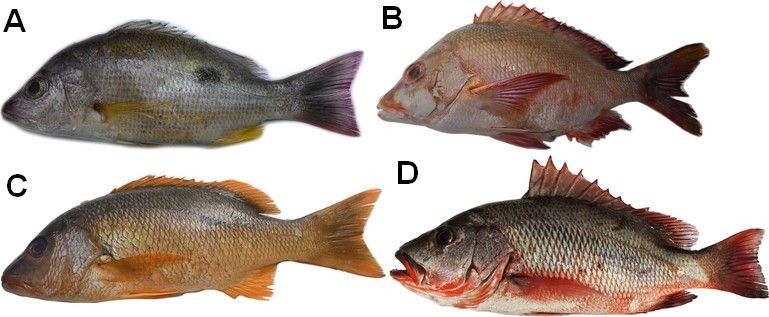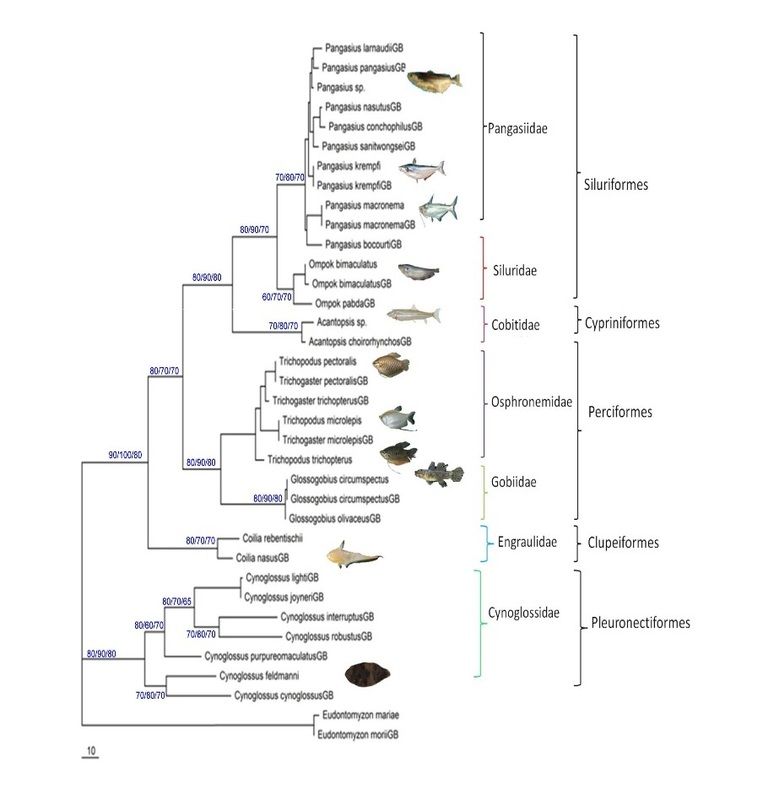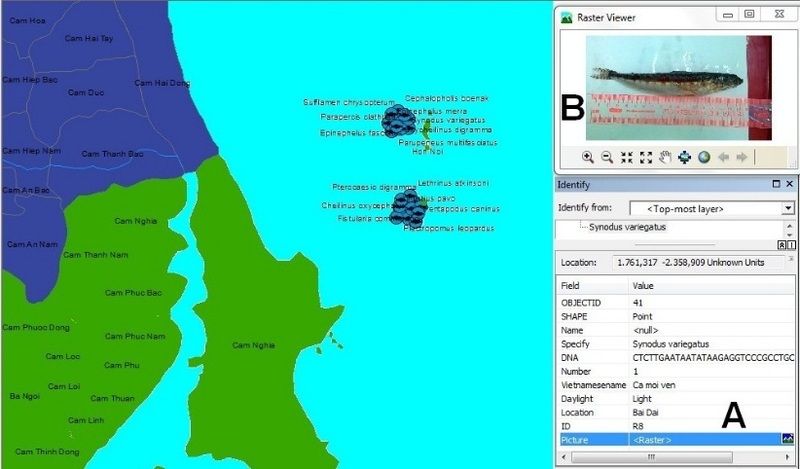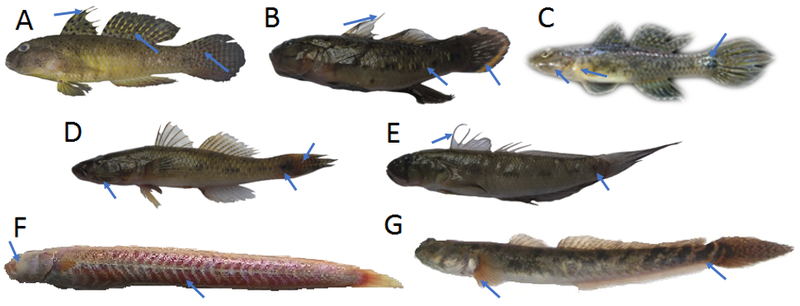Ghi nhận mới sinh vật cộng sinh ngoài trên hải sâm vú Holothuria nobilis (Selenka, 1867) và hải sâm lựu Thelenota annanas (Jaeger, 1833) bị bệnh lở loét
Nguyễn Văn Hùng1, Nguyễn Quế Chi1, Trần Quang Sáng2, Đặng Thúy Bình2 1Viện Nghiên cứu Nuôi trồng thủy sản III; 2Viện Công nghệ Sinh học và Môi trường, Trường Đại học Nha Trang Fulltext
Phylogenetic relationships of Emperors (Lethrinidae) and Snappers (Lutjanidae) in Vietnam based on mitochondrial DNA sequences

Fishes of the families Lethrinidae (emperors) and Lutjanidae (snappers) are commercially important in South China Sea. However, in terms of morphology, they can be confused because of a basic “fish-like” shape with large mouths and notched tails. In Vietnam, however, classification system of fish species based primarily on morphological characteristics. Therefore, the number ...
Phylogenetic relationships of freshwater fish in Vietnamese Mekong

The Mekong River Basin represents a global hotspot of aquatic biodiversity second only to the Amazon River in terms of total fish species richness. Our study focuses on phylogeny of freshwater fish in Vietnamese Mekong. Freshwater fish species were sampling at 7 Provinces along Hau and Tien rivers. Morphologically, 11 species have been identified. Phylogenetic trees were constructed based ...
WEBGIS for reef fishes biodiversity at Nha Trang and Cam Ranh bays in Khanh Hoa province, Vietnam

Nha Trang and Cam Ranh Bays have a range particular importance for marine biodiversity, where concentrate coastal fishing grounds. However, it is strongly affected from human activities such as overexploitation, destructive fishing, contamination, leading to impairment of natural resources. A WebGIS is designed with tools and features that are common on Web pages, so it is easy to ...
Goby species diversity in Vietnam based on morphological and genetic characteristics

The Gobiidae is one of the largest fish families in the world, with more than 1700 described species in both tropical and temperate freshwater as well as marine ecosystems. The large number of species, small size and high variation of morphology makes the precise identification and classification of gobies very difficult. Based on morphological characteristics, ...
